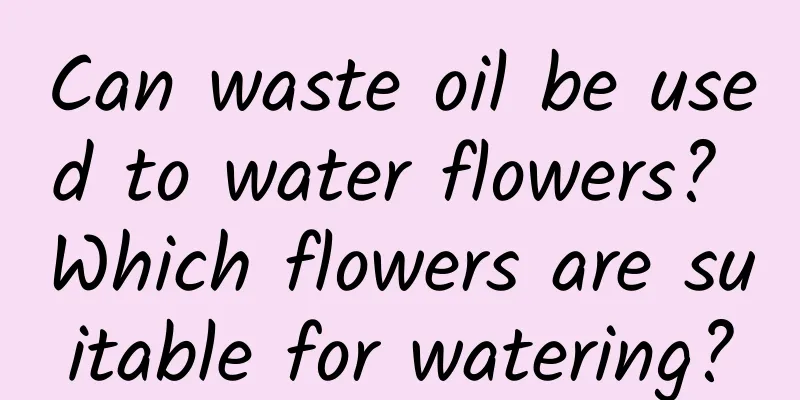Water and fertilizer management methods for potted plum blossoms

Principles of watering potted plum blossomsFor potted plum blossoms, watering must be timely and the amount of water should be moderate. Follow the principle of not watering unless the soil is dry, and watering thoroughly when watering. It is most appropriate to keep the soil in the pot moist when watering, but not too wet, and certainly not allow water to accumulate. If the soil in the pot is too dry, the green leaves will fall off, while if the soil in the pot is too wet, the leaves will turn yellow and fall off. In addition, it is best to use rainwater for plum blossoms, or store tap water for a day or two before using it. Water and fertilizer management of potted plum blossoms at different stagesPost-spring bloom periodDuring this period, the plum blossoms need to be repotted and the soil changed. You can apply some dried chicken manure, pond mud, etc. as base fertilizer at the bottom of the pot. Water it once after repotting, and then keep the soil moist. Plum blossom budding periodFrom April to May, when plum blossoms are sprouting, it is necessary to strengthen the management of water and fertilizer. Fertilizer should be applied once every half a month, preferably by watering with chicken manure or compound fertilizer. If the new shoots do not grow well, it is necessary to apply compound fertilizer water in time, and the concentration should be kept at 20%. If the soil in the pot is dry before applying fertilizer, you can loosen the soil first and then apply fertilizer, which will help better absorption of nutrients. Flower bud formationJune is a rainy season, and the plum blossoms are in the process of forming buds, so watering needs to be restrained and the soil in the pots should be slightly dry. When the new branches of plum blossoms grow to 25 cm long, stop watering. Wait until they begin to wilt before watering again, but don't water too much. July and August: High Temperature PeriodThe temperature is very high at this time and sufficient water is needed, so watering must be sufficient. You can water once in the morning and once in the afternoon. Autumn and WinterDuring this period, the plum blossom buds have formed. Just keep the potting soil moist and apply two or three times of thin liquid fertilizer. After the leaves fall in autumn, reduce the amount of water, water once every two or three days, and stop fertilizing. Control watering in winter, and increase the amount of water appropriately before the flower buds bloom in early spring. |
<<: Cutting propagation method of laurel
>>: Tips for Making Wintersweet Bloom More
Recommend
The planting time of lotus
1. Planting time Bowl lotus is not very dependent...
These 4 kinds of flowers love to produce small babies. If you grow them casually, even a big tank can’t hold them all!
The snake plant has produced a lot of little ones...
Where do pistachios grow?
Pistachios are relatively large and oblong in sha...
Can lucky bamboo be exposed to the sun? Can lucky bamboo be placed in the bedroom?
1. Whether you can get sun exposure Lucky bamboo ...
Suitable climate and temperature for growing ugli oranges
Ugly orange planting conditions Ugly orange is a ...
How to grow dahlias in winter
Dahlias belong to the genus Dahlia in the Asterac...
How to eat money grass? Can money grass be eaten for a long time?
1. How to eat 1. Soak in water and drink: It is v...
Winter care of Gloxinia
1. Low temperature treatment In winter, when the ...
How to prune the tea tree
Pruning time for hibiscus When cultivating tea ro...
What is the Feng Shui effect of tulips?
Feng Shui Effect of Tulips The Feng Shui of Tulip...
How to plant gardenia seeds
1. Seed collection Choose ripe fruits that are ma...
The difference between Prunus mume and Prunus mume
Different leaves The petiole of Prunus mume is sh...
These 5 kinds of flowers love water. The more you water them, the more they will bloom. If they lack water, they will wilt!
Coinweed As soon as spring arrives, the pennywort...
Mountain turtle planting methods and precautions
How to plant mountain tortoise Before planting th...
Spring carrot planting time and method cultivation technology and management
Spring Carrot Planting Time Spring is a good time...









